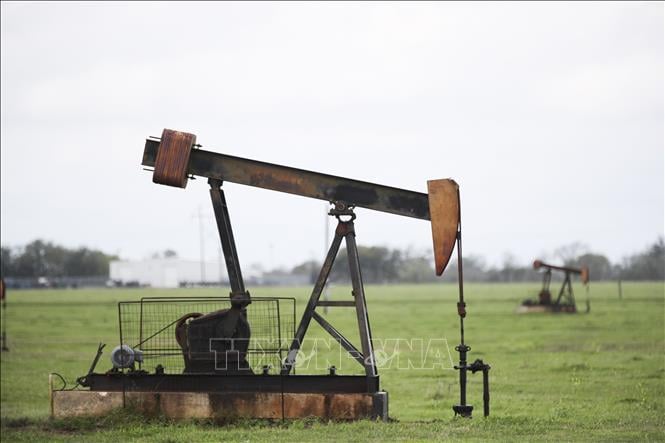
At the end of this session, the price of North Sea Brent crude oil for delivery increased by 94 US cents, equivalent to 1.46%, to 65.47 USD/barrel. The price of US West Texas Intermediate crude oil increased by 81 US cents, equivalent to 1.33%, to 61.69 USD/barrel.
“The market believes that the actual amount of oil that will be added to the market is much lower than the announced number, because some OPEC+ members are already producing at full capacity,” said Andrew Lipow, president of consulting firm Lipow Oil Associates.
OPEC+ said on October 5 it would increase output by 137,000 barrels per day from November – the same as the increase in October – amid lingering concerns about a possible oversupply in the market.
Before the meeting, some sources revealed that Russia supported an increase of 137,000 barrels/day to avoid putting pressure on prices, while Saudi Arabia wanted to double, triple, or even quadruple that number to quickly regain market share.
The modest increase comes as Venezuelan exports are rising, Kurdish flows through Türkiye have resumed, and many Middle East cargoes remain unfilled for November delivery, according to Tamas Varga, an analyst at PVM Oil Associates.
Saudi Arabia kept the official selling price for its Arab Light crude exported to Asia unchanged. While Asian refiners surveyed by Reuters had expected a slight increase in prices, expectations have weakened after rising Middle Eastern supplies pushed the spread to a 22-month low last week.
In the short term, some experts predict that the upcoming refinery maintenance season in the Middle East will help limit the rise in oil prices.
The Kirishi refinery – one of Russia’s largest – has halted operations at its key oil processing unit after a drone attack sparked a fire on October 4. Two industry sources said the restoration of operations is expected to take about a month.
The weak demand outlook for the fourth quarter is another factor that is holding back prices. US crude, gasoline and distillate inventories all rose more than expected in the week ended September 26 as refining activity and demand declined, according to the US Energy Information Administration (EIA).
Source: https://baotintuc.vn/thi-truong-tien-te/gia-dau-tang-khoang-1-khi-lo-ngai-ve-nguon-cung-lang-diu-20251007075717227.htm


![[Photo] Prime Minister Pham Minh Chinh chairs the 16th meeting of the National Steering Committee on combating illegal fishing.](https://vphoto.vietnam.vn/thumb/1200x675/vietnam/resource/IMAGE/2025/10/07/1759848378556_dsc-9253-jpg.webp)































![[Photo] Super harvest moon shines brightly on Mid-Autumn Festival night around the world](https://vphoto.vietnam.vn/thumb/1200x675/vietnam/resource/IMAGE/2025/10/07/1759816565798_1759814567021-jpg.webp)





































































Comment (0)